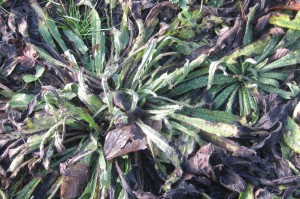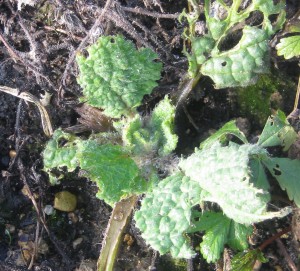Dont do too much weeding!
In winter time almost all perennials look terrible; they carry last years now dead leaves, flop on top of each other and then get covered with tree leaves to give the overall impression of grey/brown mess. Tidy gardeners may have gone round at the end of Autumn cutting back old growth and clearing the debris into the compost bin. Others may leave this job till spring, which provides more cover for insects and small rodents but does mean you have to live with a mess. I tend to be in the latter camp but mainly so that I don't accidentally destroy all the self-seeded little wonders that are the plants natural renewal process. A few of the plants I sell are either annuals, biennials or short-lived perennials which rely on setting seed to replace the old plants. These include the cheiranthus (wild wallflower) - pictured above - echium vulgare and borage. All fabulous bee-plants in their way so you do not want too loose them in the tidying process.
The cheiranthus produces many small seedlings at the base of the old woody plant, so they are quite easy to find if you leave the woody stalk in as a marker. They are dark green glossy stars and just need to be slightly thinned to 10cm (3inches) apart to encourage nice bushy plants.
The echiums (pictured left) look terrible after their first year and you could be forgiven to thinking they were some terrible thistly weed so I provide this picture to aid their identification if you have forgotten what you planted. Have faith and by summer they will transform into blue spires that provide nectar all day long.
Similarly, borage (below)can also be mistaken for a weed in winter. It sets seed very reliably but by mid winter the leave may well have become a bit tatty; see this picture from my garden where I think the rabbits have been helping themselves to the tasty leaves. You may remember where you had the borage planted, and the seedlings will be within 30 cm of the where the parent plant was but that may now have rotted completely away. If you are likely to have trouble remembering you might want to find the seedlings in October and lable them if there is a risk your hoe will get them.

